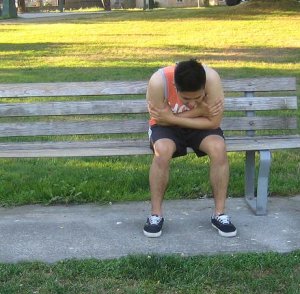A hamstring injury happens near the area of the hip, resulting to severe pain at the back of the thigh, groin or the hip. The hamstrings are composed of 3 separate muscles and responsible for bending and flexing the knee and movement of the hip.
The hamstring can be injured while kicking, running, skating, weightlifting or even walking due to sudden stretching of the hamstring muscles. There is bruising, swelling, tenderness of the affected area as well as difficulty in walking and putting weight on the affected leg.
Symptoms of hamstring injury

- Pain felt at the back of the thigh and lower buttock especially when walking, bending over and straightening the leg.
- Sudden and severe pain when performing exercises
- Snapping or popping sensation
- Bruising
- Tenderness
Treatment
- Rest the affected area. Avoid performing activities or playing sports and take away any weight placed on the leg to prevent further damage and worsen the condition.
- Apply an ice pack on the affected area for at least 10-15 at a time, every hour on the first 24 hours after the injury to lessen any inflammation and swelling. After 24 hours, apply the pack on the area 4-5 times at 2-3 hours every day to lessen the pain and the inflammation.
- Once the pain is reduced, apply alternately hot and cold therapy. Follow the pattern by applying first the warm compress for at least 2 minutes and followed by a cold compress for at least 1 minute. Perform at least 6 cycles of this pattern 2 times every day.
- Wrap the upper leg using a compression bandage or wear compression shorts to lessen the swelling. Avoid wrapping the bandage too tightly to prevent problems with the circulation.
- Elevate the affected area above the level of the heart for proper flow of blood in the area and lessen any pain. Raise the leg on a couple of pillows or a raised chair to keep it elevated and for fast healing of the condition.
- After the 2nd day, try gentle movements every hour. Avoid overdoing the movements or applying too much weight on the leg to prevent further damage and worsen the condition.
- Take the prescribed over-the-counter pain medications such as ibuprofen or acetaminophen to lessen the pain and the swelling.
- Seek the help of the physical therapist for some rehabilitation exercises and stretches and restore the range of movement of the affected area.
Tips
- Proper stretching of the hamstring before performing any physical activities. Stretching of hamstring can be done statically or dynamically.
- Avoid repetitive movements for the hamstrings if there is a history of hamstring injuries.
Disclaimer / More Information
The material posted on this page on hamstring injury is for learning purposes only. Learn to recognize and manage hamstring injuries and conditions by taking a first aid and CPR class with one of our training providers.
